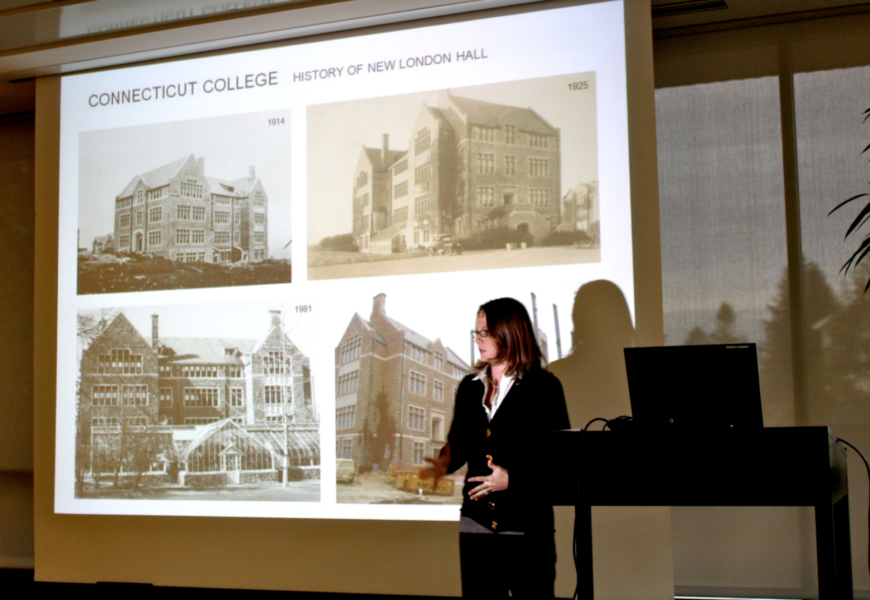New London Hall — Photo courtesy of Hannah Plishtin
With construction completed in 1915, New London Hall was the first academic building on Connecticut College’s campus. Designed by the firm Ewing & Chapell, the building was named in honor of New London’s generosity and assistance in the founding of the college.
Though the latest renovations to New London Hall may be the most significant, they won’t be the first. In 1935, a grant from the Rockefeller Foundation funded the construction of the building’s greenhouse. Some 45 years later, in the early 1980s, a round of renovations were made to provide students with new facilities to accommodate rapid scientific advancement.
To promote a more sustainable campus, designers wanted these current renovations to make the new building as environmentally sustainable as possible. The team decided to seek Leadership in Energy and Environmental Design (LEED) certification through the U.S. Green Building Council. Primarily, this meant that every material used in construction had to meet certain conditions; locally sourced and recycled materials will be used wherever possible, and components used within the facilities themselves will promote clean air quality, which accounts for a significant amount of LEED credit distribution. The building will also increase water efficiency by about 20%, and will feature a shower and bicycle racks to promote bicycle commuting.
Undoubtedly the most significant part of the project, at least in terms of sustainability, is the use of geothermal heating and cooling systems. Water will be run through a series of wells as deep as 500 feet into the ground of Tempel Green, using the earth as a heat sink to raise and lower the building’s air temperature. Within a few years, the building won’t use any resources to heat or cool it. These changes mean that the fence will continue to encircle northeastern corner of Tempel to accommodate the drilling operation.
An interesting take on sustainability has come in the form of a work setup model known as partnering. Though this isn’t the first Conn construction project that has taken advantage of partnering, it is significant nonetheless. In essence, partnering is a working style that tries to put everyone involved in the project on a level field of input. Used because of its reflection of the school’s liberal arts tradition of openness and integration, partnering seeks to more closely bridge the gap between concept and real world application.
In addition to substantial internal renovations on the existing New London Hall, the new structure will include a separate tower connected by a glass hallway. Though they’ll both be considered New London Hall, the new tower is something of a complement to the original building. Its architecture and dimensions will closely mirror the original, with the most noticeable difference being the use of terracotta rather than locally sourced granite. This decision was made primarily because the granite is now nearly impossible to come by, and would have been extremely expensive to acquire.
In terms of renovation and function, the existing building will be outfitted with brand new state of the art classrooms to house the Biology, Botany, and Computer Science departments (the relocation of the CS department will allow for the demolition or re-purposing of the Strider and Winthrop annex). Each floor of the new building, aside from the upper one, will feature a unique large classroom space, ranging from a wet lab to a 48-seat lecture hall.
Though the new New London Hall may not run the gamut of sustainable features, the use of recycled, local, and clean materials is undoubtedly a step in the right direction. Needless to say, the geothermal heating and cooling system will be even more revolutionary. Seeking LEED certification has allowed the school to make a bold statement about its adherence to sustainability that may continue in future construction projects. •









